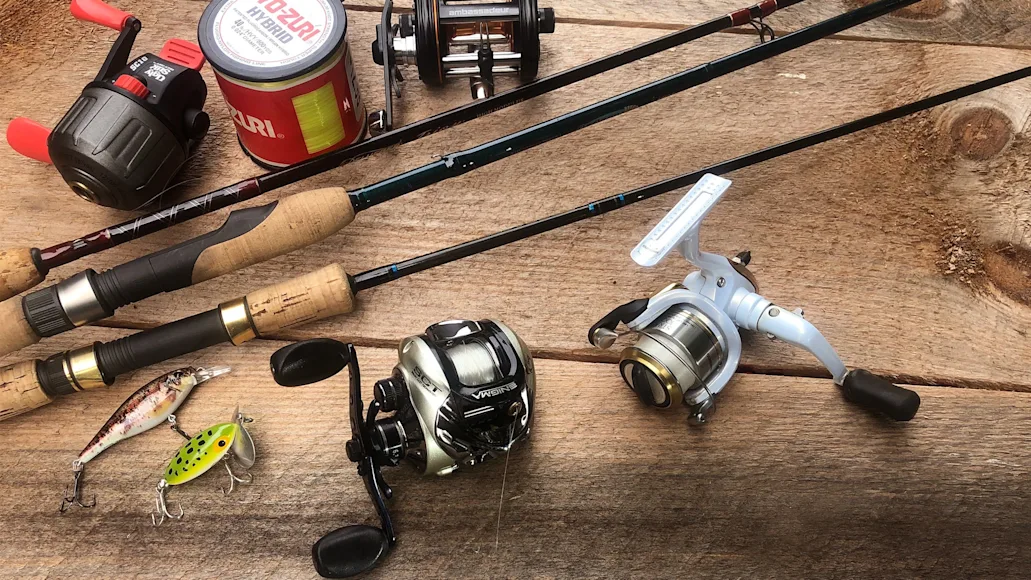_We may earn revenue from the products available on this page and participate in affiliate programs. Learn more ›
_
Outside of fly fishing, the are four main types of reels for fishing, and which one you choose can make a difference to your success. Maybe you’re new to fishing. Maybe you’ve been at it for a while and you’re ready to level up your gear. Or perhaps you’ve decided it’s time to graduate from catching smaller fish at the pond to jumbos in the big lake or saltwater. No matter where you stand, there’s a perfect reel for the job and you need to figure out which, among the four types of reels, is best.
Although your conventional-reel options aren’t nearly as vast as lure and hook choices, for example, it’s still important to understand the capabilities and functionality of the most common reel types that you’ll encounter at the tackle shop. The good news is that whether you’re after a 50-pound catfish or want to tie your kiddo into his or her first bluegill, there’s guaranteed to be one that suits your needs. So, to help you choose the best fishing reel
, here’s a breakdown of the four most popular types of reels.
Type of Reel #1: Spincast Reel
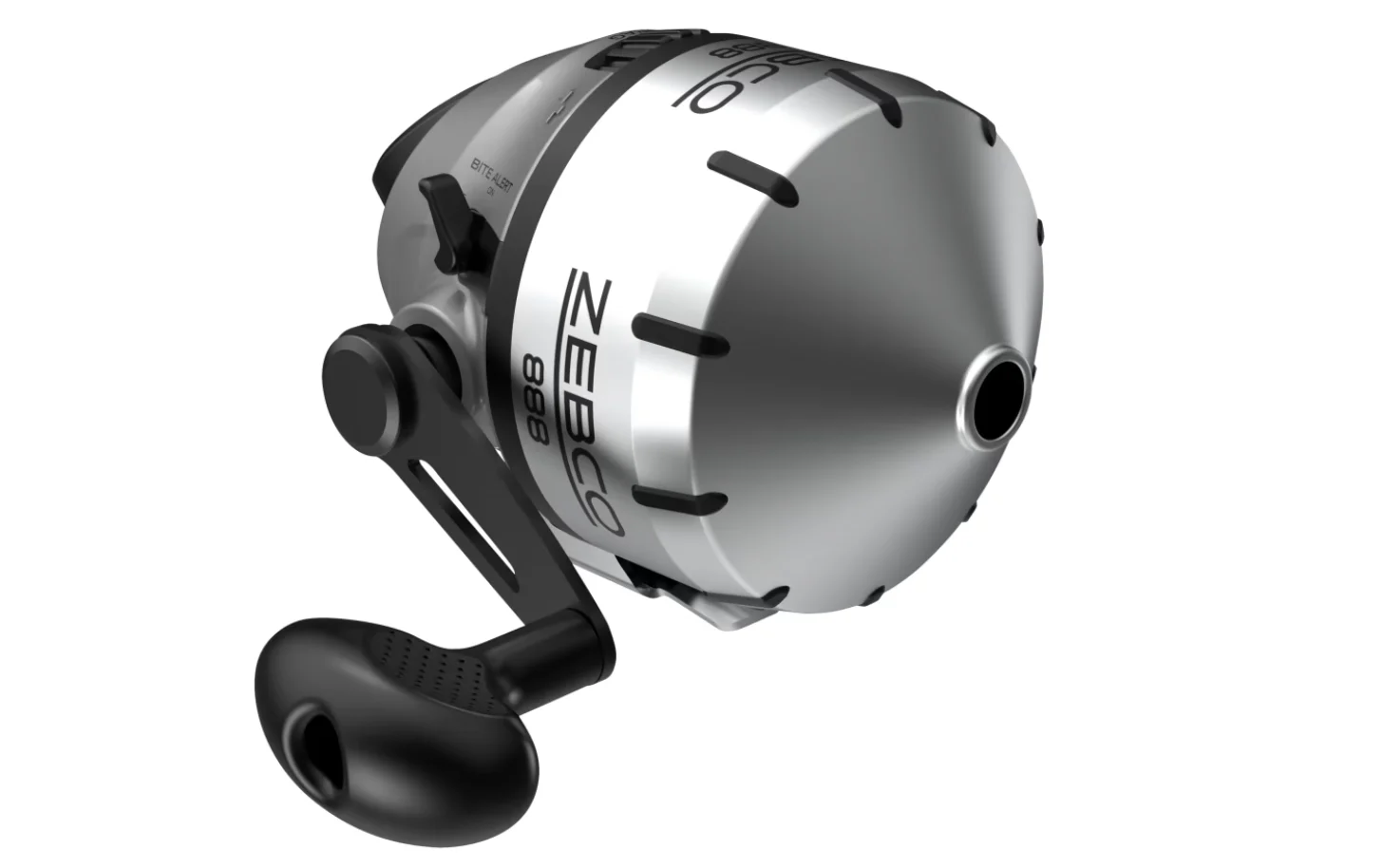
The Zebco 880 is a great spincast reel for a beginner angler to learn on. Bass Pro Shops
Are there some adults out there who lean on spincast—a.k.a. push-button or closed-face—reels? Yes, which is why some manufacturers make them in larger sizes
. For the most part, however, these reels are for kids. I started out with a spincast reel, and so have my two children. While it’s hard to make a case for them outshining other styles of reel in terms of performance, you can’t beat them for simplicity, ease-of-use, and for early learning.
feature a closed face. The spool is hidden inside, and the line simply feeds through a small hole in the front of the reel. To cast, you simply depress the button at the rear and fire. Turn the handle after splashdown, and the reel engages so you can retrieve your lure or reel in your fish. The reason this is so great for kids is because a spincast doesn’t require them to take any extra steps when casting, like keeping tension on the line with their thumb or remembering to manually engage the reel.
Among the four main types of reels, spincasters are particularly good for smaller fish, as most of them are inexpensive and don’t feature great drags or gears. While the design is meant to reduce knots and tangles by keeping the spool contained, trust this dad when I say they can still get tangled internally—badly.
Reel #2: Spinning Reel
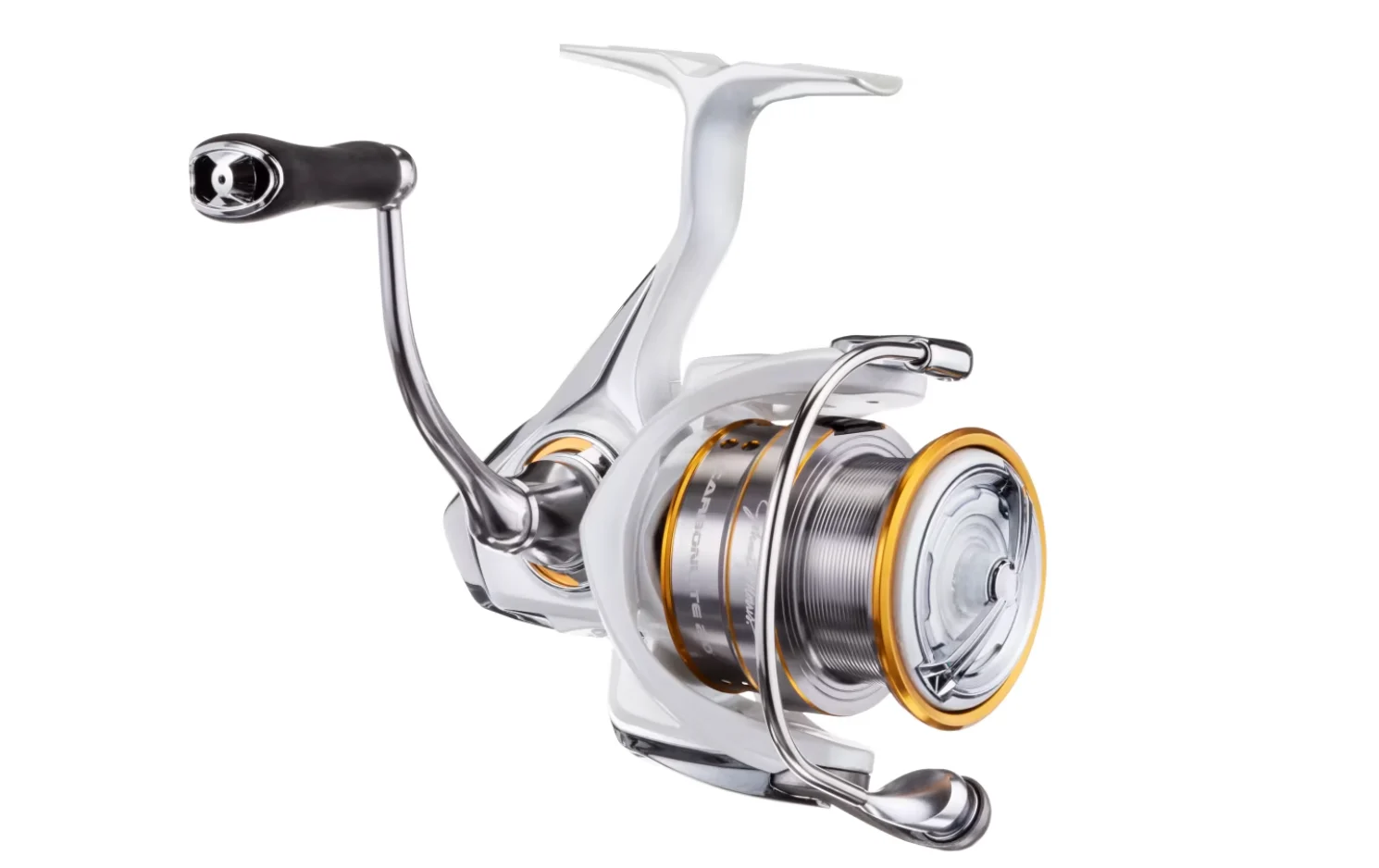
Bass Pro Shops Johnny Morris Carbonlite 2.0 spinning reel. Bass Pro Shops
are available in a huge range of sizes from tiny models
designed for catching stream trout and panfish to large models
capable of battling tuna. Regardless of size, however, all spinning reels function the same way.
As the handle is turned, the spool moves forward and backward on a central internal post. Simultaneously, a wire arm called the bail revolves around the spool gathering the incoming line and feeding it onto the spool. The movement of the spool ensures that the line is laid evenly instead of stacking up at one end or the other of the spool. To cast a spinning reel, you open the bail, keeping one finger on the line for tension, and fling. The line will come off the spool in coils, which will straighten during the cast as they’re funneled through the rod guides, which decrease in diameter.
Compared to baitcasting reels (see below), spinning reels are generally easier for rookie to anglers to cast, as they’re designed to function without any extra skill or attention from the angler. While some seasoned anglers argue that baitcasting reels provide better control and cast accuracy, I disagree. With some practice, you can make extremely accurate presentations with this type of reel. Another user-friendly feature is the drag knob at the front of the spool, which you can turn to adjust quickly during a fight.
Type of Reel #3: Low-Profile Baitcasting Reel
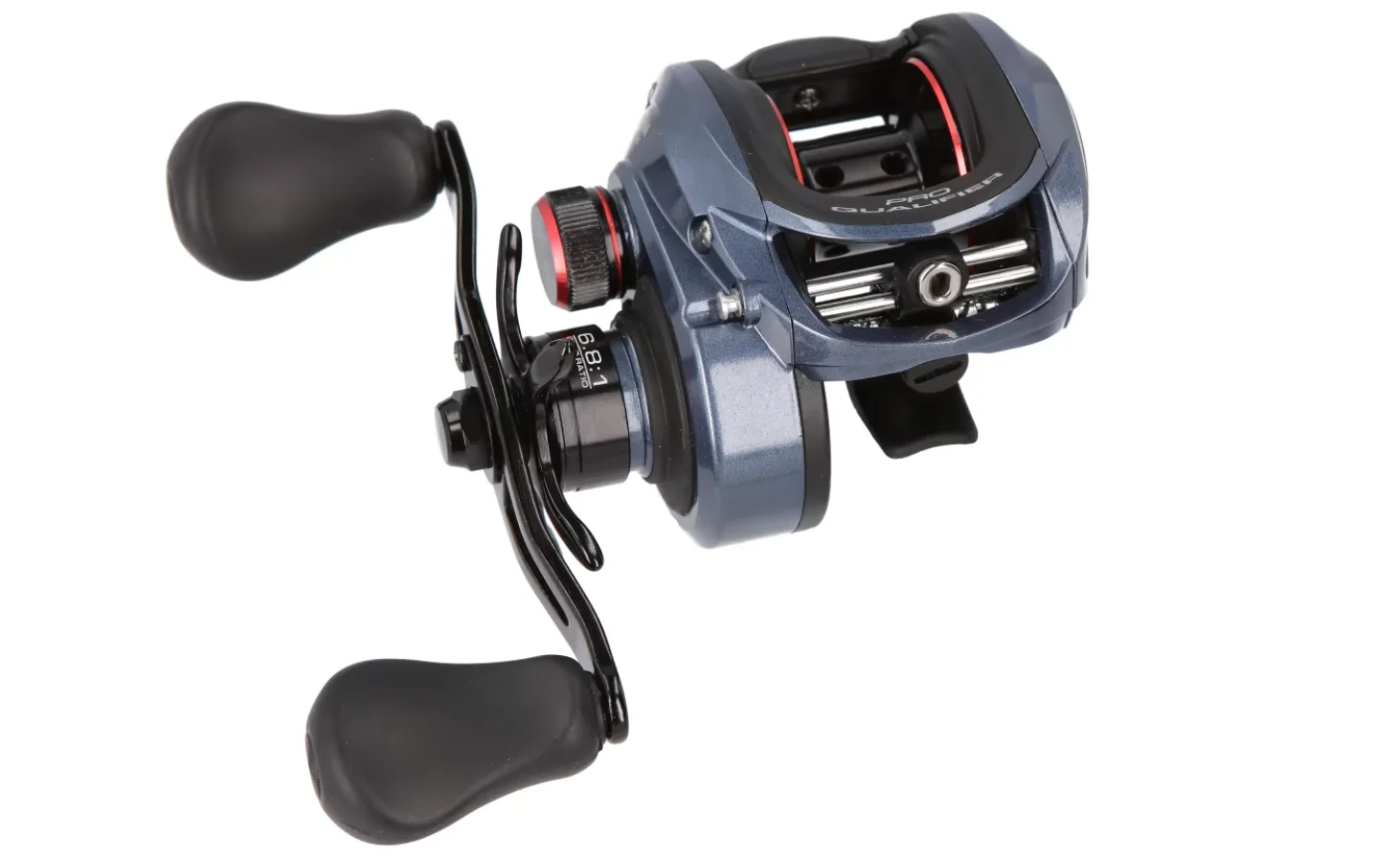
Bass Pro Shops Pro Qualifier low-profile baitcaster. Bass Pro Shops
are most popular among bass fishermen, and they’re kind of like the sportscars of the angling world. They’re slim, sleek, lightweight, and offer the ability to make fine-tuned adjustments that alter their performance based on what you’re casting. Getting the most from all their bells and whistles, however, takes time to master.
Whereas line comes off a spinning reel’s fixed spool in coils, a baitcaster’s spool spins at high RPM to send the line straight down the rod through the guides during the cast. During the retrieve, a guide called a level wind moves back and forth across the face of the reel to lay line evenly back on the spool. The tricky part is that depending on the weight of the lure you’re casting and the force you put behind the cast, it’s very easy for the spool to over-spin, which will result in a frustrating tangle known as a bird’s nest. It’s your job to apply just enough thumb tension on the spool to stop this from happening, but you also need to adjust the internal brakes and spool tension, and you might need to reconfigure both every time you change lures. To use a hollow-body frog
as an example, you’d want minimal brake pressure and light spool tension because the lure doesn’t weigh very much; switch to a ¾-ounce jig
, and those same settings will likely cause bird’s nest, so you’ll need to readjust.
If a low-profile baitcaster sounds complex, it’s not, terribly. This type of reel just requires more practice and familiarization to dial in. Once you’ve got it dialed, though, these reels are as capable of making short, accurate flips to docks and stumps as they are bombing a spinnerbait across a cove. They also retrieve line faster than a spinning reel, helping you keep up with fish when they change direction quickly.
Reel #4: Round-Profile Baitcasting Reel
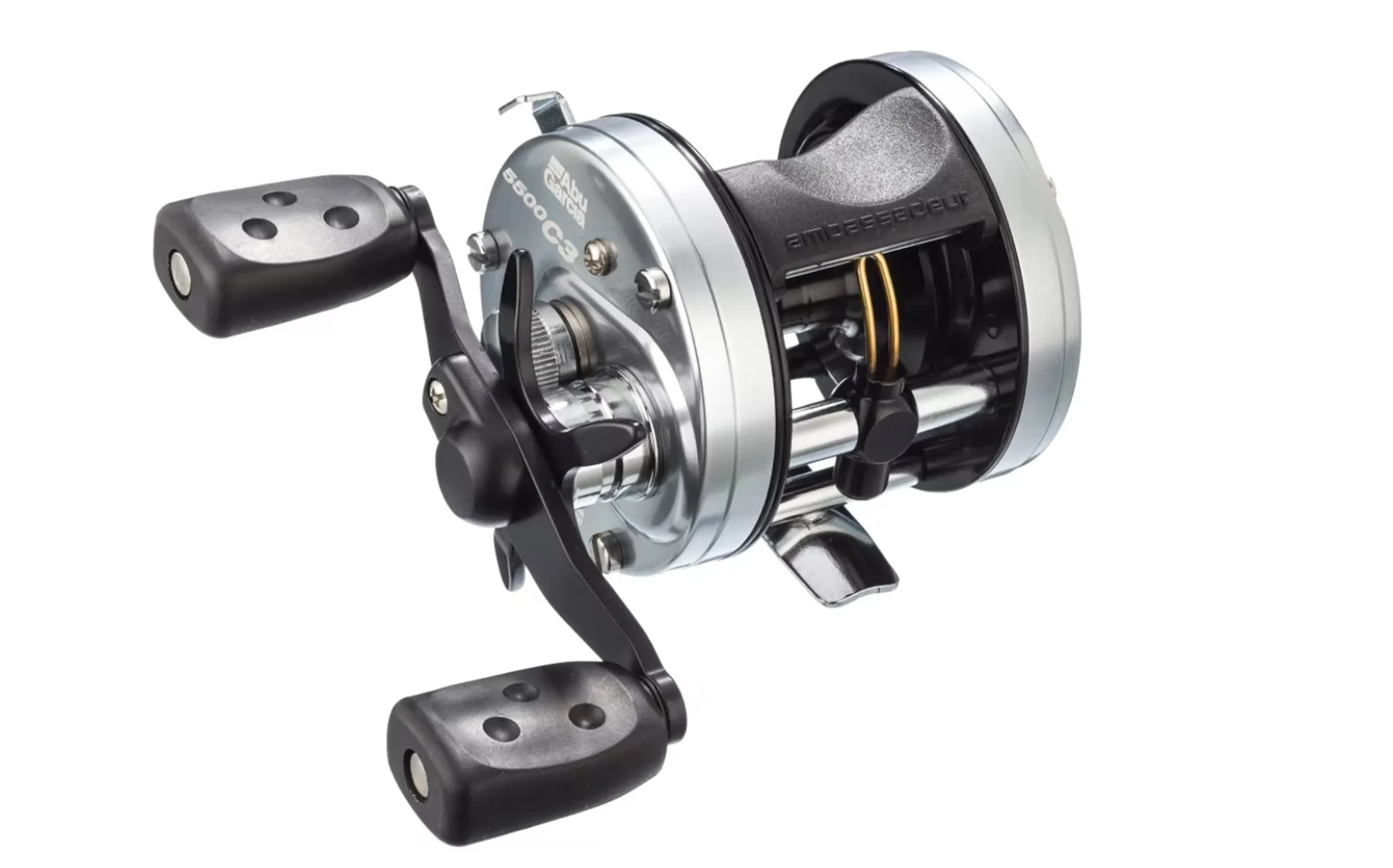
The Abu Garcia Ambassadeur C3 Classic is a good example of a good yet relatively affordable round baitcasting reel. Bass Pro Shops
Round-profile baitcasting reels
are the predecessors of low-profile baitcasters. While they may not be popular among hardcore bass anglers anymore, they’re still produced today for a wide range of other fishing pursuits.
This type of reel functions exactly like a low-profile baitcaster, though many do not feature the same fine-tuning abilities. This is primarily because these reels reserved for lobbing heavy baits for catfish
, or casting large lures for muskies, so there isn’t as much need for minute adjustment. Some round-profile reels feature an automatic level-wind guide so the inbound line lays evenly on the spool, while others do not
, making it necessary for you to manually even out the line during the retrieve with your thumb so it doesn’t stack to one side.
Compared to the other types of reels, round-profile baitcasters tend to be tougher, with stronger drags and beefed-up internal gears capable of beating everything from monster flathead catfish to deep-water amberjacks. They also hold much more line than a low-profile baitcaster, making them ideal for fishing in deep water or when targeting big fish that run hard and far after you set the hook.

